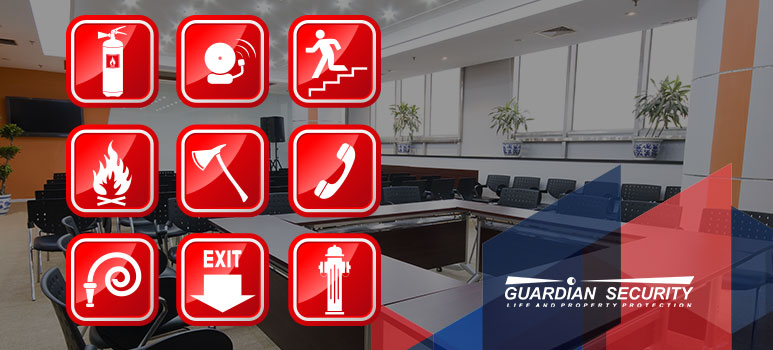The Essential Guide to Fire System Alarm / Notification Categories

- Guardian Sponsors Washington State Association of Fire Marshals Conference - November 1, 2021
- Is It Time To Winterize Your Dry SprinklerSystem? - October 5, 2020
- A Quick Reference Guide to Fire Extinguisher Maintenance and Use - October 3, 2020
There are three categories of alarm signals for a fire system that describe and delineate by nature the severity of and type of response needed: alarm, trouble, and supervisory. These signals are communicated from the detection device triggering the alarm to the fire alarm control panel. The control panel will then perform several actions almost simultaneously: trigger occupant notification (horns, sirens strobes, bells) and provide central station notification. Once a Central Station receives the incoming signals they have a series of required and customizable responses depending on the signal type. The sections below describe the signal type, what these signals mean, what is the trigger for these signals, and types of responses to the signals.
FIRE ALARM SIGNALS
Meaning of signal: FIRE!
Triggers: detection devices, water flow switches
Reason for the notification: To notify and trigger a response from the fire department, provide local occupant notification, provide responsible parties notification of a fire
Response types: In every case when our central station receives a fire alarm signal the first action is to dispatch the fire department. Once this is completed the notifications to responsible parties can be customized in almost any manner needed. Standard procedures are to notify the site and then to notify the responsible parties.
TROUBLE SIGNALS
Meaning of signal: something on the system isn’t working quite right. Something has malfunctioned, is malfunctioning, or needs attention.
Triggers: detection devices failing, shorts in the wiring of the system, communication failures, low battery etc.
Reason for the notification: To notify the responsible parties that their system has a trouble condition and that the system may not be working correctly or at all.
Response types: Standard procedures are to notify the site and then to notify the responsible parties and generate an internal work order for our service department to follow up on the following business day. These responses can be customized to fit the needs and dynamics of the responsible parties.
SUPERVISORY SIGNALS
Meaning of signal: There is a condition that you need to know about that may impact the facility, the fire systems or the safety of the occupants.
Triggers: low air in the sprinkler system, temp monitoring, tamper switch for sprinkler water shutoff, duct detectors etc.
Reason for the notification: To notify and trigger a response from the fire department, provide local occupant notification, provide responsible parties notification of a fire
Response types: In every case when our central station receives a fire alarm signal the first action is to dispatch the fire department. Once this is completed the notifications to responsible parties can be customized in almost any manner needed. Standard procedures are to notify the site and then to notify the responsible parties.
About Guardian
For over 40 years, Guardian Security has been at the forefront of custom commercial security, fire, and communication systems integration in Washington State. Contact us today to learn more.

